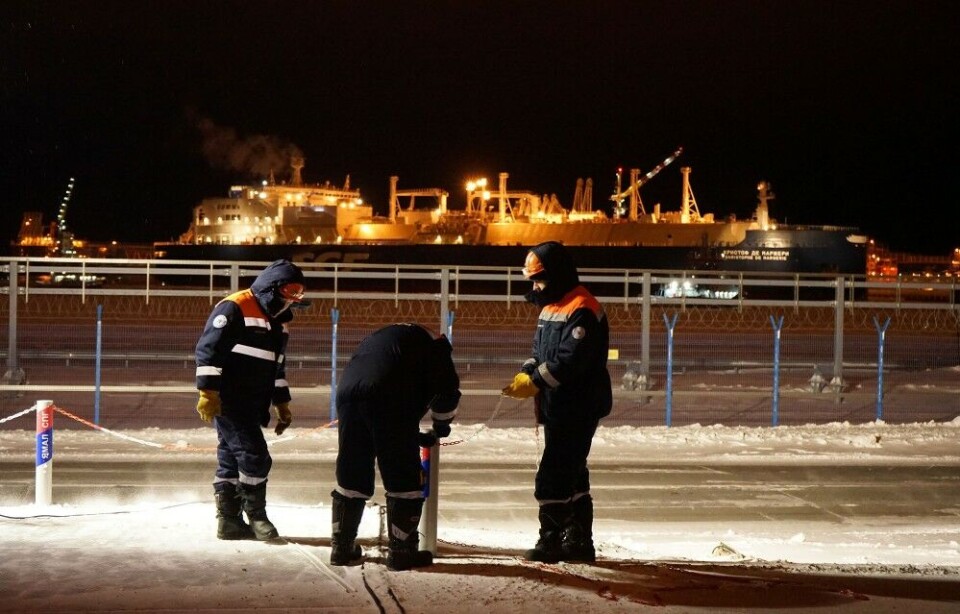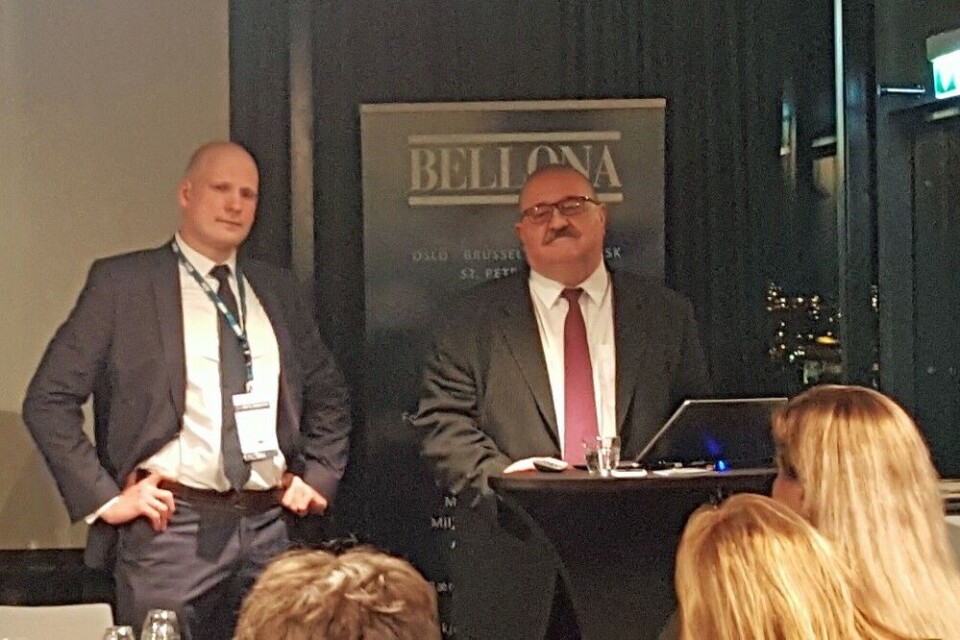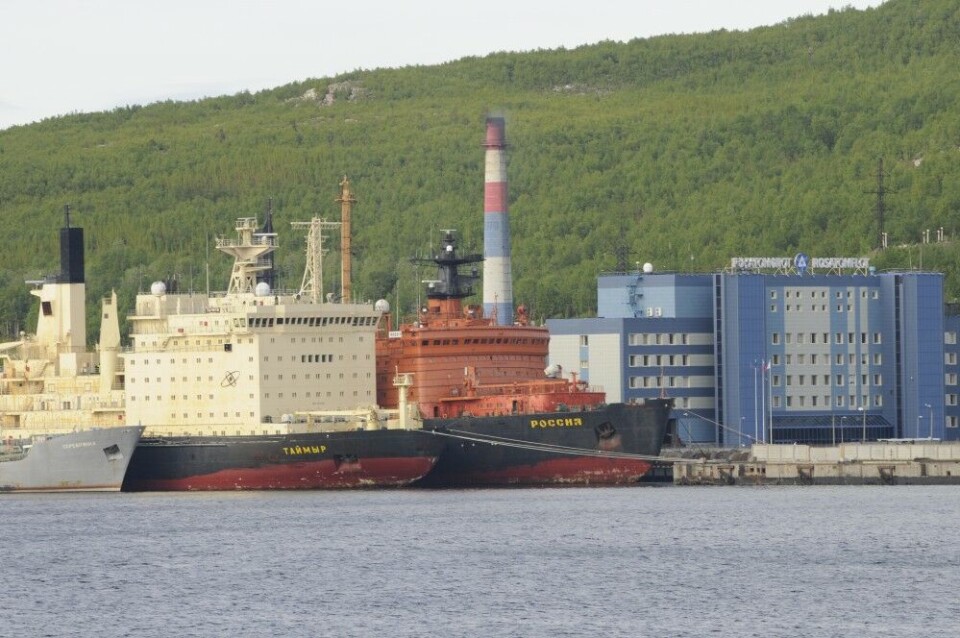
Moscow confirms go-ahead for giant nuclear icebreaker
Russia’s need for year-round petroleum export along the Northern Sea Route is the main driver behind the futuristic icebreaker.
Last year, the Kremlin ordered by decree shipping along the Northern Sea Route to be 80 million tons per year by 2024, and the easiest way to reach such huge amount is to boost export of oil, gas and other minerals.
However, Russia’s current and next generation fleet of nuclear powered icebreakers will not be sufficient to secure winter-voyages by LNG-tankers on the eastern part of the Northern Sea Route, from Yamal to the Pacific.
Consequently, the much wider and more powerful Leader icebreaker is required.

Deputy Prime Minister Yuri Borisov now confirms his government by mid-March will issue an order with go-ahead for the icebreaker project, news agency TASS reports.
According to Borisov, the Zvezda shipyard in Bolshoi Kamen in the Far East will be upgraded with docking facility for building the enormous vessel. Rosneft will be in charge of the shipyard reconstruction in a consortium with Rosneftgaz and Gazprombank.
The same shipyard is supposed to facilitate for construction of other ice-classed vessels to support Russia’s Arctic shipping, like oil tankers, gas carriers, drilling platforms and supply vessels, TASS reports.
Limited transit volumes
Mikhail Grigoriev is an expert on shipping and logistics in Russia’s Arctic region. Speaking with the Barents Observer at the Arctic Frontiers conference in Tromsø in January, Grigoriev said the main driver for Northern Sea Route development is not transit voyages with cargo between Europe and Asia.
“Development of mineral resources is the main incentive motive of development of Arctic shipping for Russia,” Mihail Grigoriev explained.
He says transit navigation could come as a result of LNG shipping.
“Creation of a system of transportation of LNG from the Kara Sea [Yamal and Ob Bay] to the Bering Sea on the sector of the Northern Sea Route within expanded or year-round navigation will allow to create the regular system of escort of transit and coasting vessels as part of caravans,” Grigoriev elaborated.
Until then, he argues, “transit voyages, both internal and international, will have irregular character and are limited on freight traffic volume.”

Two more 60 MW icebreakers
At a panel debate about Arctic shipping arranged by the Bellona Foundation in Norway, Director of Russia’s Northern Sea Route Directorate, Vyacheslav Ruksha, could tell that two additional 60 MW nuclear icebreakers of the universal LK-60Ya class (Project 22220) will be built.
“Decision to build 4th and 5th universal atomic icebreakers was adopted at the meeting headed by Prime Minister Dmitry Medvedev on 28th of November 2018 in St. Petersburg,” Ruksha said.
The LK-60Ya class is 32 meters shorter than the Leader-class and is nearly half as powerful.

The two icebreakers are similar to the three currently under construction at the Baltic yard in St. Peterburg. The three, named “Arktika”, “Sibir” and “Ural” will be commissioned in the period from next year until 2021-2022.
LNG counts for half of all cargo
Director Ruksha elaborated on how to reach the 80 million tons of Northern Sea Route Cargo by 2024.
“Yamal LNG and Arctic LNG 2 will count for 19,5 million tons each. Crude oil from Noviy Port area and Arctic Gate terminal is estimated to 8,5 million tons. Then, NorNickel will ship 1,5 million tons of metals from Dudinka. Trans-regional supply shipping of building materials to remote areas along the north coast of Siberia will count for 5 million tons and carious cargo in transit between Asia and Europe will be 5 million tons. The rest is coal yet-to-be-developed project like coal from Taimyr, crude oil from Payaha and metals from Baimskaya Ore Area, all estimated to a million tons each,” Vyacheslav Ruksha said.
His overview clearly shows that export of LNG from Yamal and Ob Bay will be bring the single largest boost to Arctic shipping in the years to come.
The biggest growth in demand for LNG will come from countries like Japan, South Korea and China. The Yamalmax LNG carriers would be able to sail east from the Kara Sea faster during wintertime if the 47-meters beam Lider icebreakers could crush the ice in front.
Powered by two nuclear reactors, the 120 MW Leader icebreakers could easily crush up to four-meter thick ice at 12 knots speed with unlimited range.

Last week, also gas producer Novatek told reporters about the goal of year around Arctic shipping by 2023.
“Our plan is to keep the Northern Sea Route open twelve months a year in 2023 to 2025 with 100 MWh nuclear icebreakers,” Novatek Chief Financial Officer Mark Gyetvay said an energy conference, Reuters reported.
Novatek operates Yamal LNG with shipping from the port of Sabetta.
You can help us…
…. we hope you enjoyed reading this article. Unlike many others, the Barents Observer has no paywall. We want to keep our journalism open to everyone, including to our Russian readers. The Independent Barents Observer is a journalist-owned newspaper. It takes a lot of hard work and money to produce. But, we strongly believe our bilingual reporting makes a difference in the north. We therefore got a small favor to ask; make a contribution to our work.
















